- Home
- Loren D. Estleman
The Perils of Sherlock Holmes
The Perils of Sherlock Holmes Read online
THE PERILS OF
SHERLOCK
HOLMES
SHORT STORIES
Authorized and licensed by
Estate of Sir Arthur Conan Doyle
LOREN D. ESTLEMAN
This book is dedicated to the memory of Martin H. Greenberg,
who was every writer’s best friend and the patron saint of the short story.
God speed, Marty.
CONTENTS
CHANNELING HOLMES
THE ADVENTURE OF THE ARABIAN KNIGHT
THE ADVENTURE OF THE THREE GHOSTS
THE RIDDLE OF THE GOLDEN MONKEYS
DR. AND MRS. WATSON AT HOME: A COMEDY IN ONE UNNATURAL ACT
THE ADVENTURE OF THE COUGHING DENTIST
THE ADVENTURE OF THE GREATEST GIFT
THE DEVIL AND SHERLOCK HOLMES
THE SERPENT’S EGG
ON THE SIGNIFICANCE OF BOSWELLS
WAS SHERLOCK HOLMES THE SHADOW? (A TRIFLE)
SUGGESTED READING
ACKNOWLEDGMENTS
Also Available
Notwithstanding the hundreds of book-length pastiches in print, only a handful of single-author Sherlock Holmes collections have appeared since Arthur Conan Doyle’s death.
All but one of the stories were published in anthologies authorized by the Sir Arthur Conan Doyle literary estate. The final story, “The Serpent’s Egg,” appears here for the first time.
In addition, three previously published essays, “Channeling Holmes,” “On the Significance of Boswells,” and “Was Sherlock Holmes The Shadow? (A Trifle)” have been revised and expanded for this book.
The book concludes with a list of Sherlock Holmes–oriented publications recommended by the author.
Loren D. Estleman is the author of nearly seventy novels, including the long-running Amos Walker, private detective, series, Sherlock Holmes vs. Dracula, or The Adventure of the Sanguinary Count, and Dr. Jekyll and Mr. Holmes. In thirty years, the Sherlock Holmes novels have rarely been out of print.
All the material in The Perils of Sherlock Holmes has been approved by the Sir Arthur Conan Doyle literary estate, represented by Jon Lellenberg, a member of the board of directors, and permission has been given the author to use the characters created by Conan Doyle.
CHANNELING
HOLMES
It’s customary for writers writing about their personal interest in Sherlock Holmes to begin with the details of their first experience of him. I can’t, because I can’t recall a time when he wasn’t known to me on some level.
In all the vast panoply of immortal literary characters, I can think of only four who have entered the dictionary with definitions of their own. To “create a Frankenstein,” be called “a real Jekyll and Hyde,” or address someone as “Sherlock” requires no explanation, even for an immigrant learning the English language. (Jekyll and Hyde, of course, present the problem of whether to consider them as two characters or one.) Yet Sherlock Holmes stands alone as a pictorial icon as well, and one that crosses all boundaries: class, generation, and geography.
One’s image of Frankenstein (or rather of his monster) depends on whether he grew up watching Boris Karloff, Christopher Lee, or Robert De Niro. The Strange Case of Dr. Jekyll and Mr. Hyde has been reprinted and filmed so many times, and imagined by so many different illustrators and actors, that no two people can be selected at random who agree on their appearance. But everyone can identify the eagle-beaked profile in the fore-and-aft cap with the calabash clamped between his teeth.
It doesn’t signify that the cap and curved pipe appear only in illustrations, and not in any of the fifty-six short stories and four novels that Sir Arthur Conan Doyle wrote involving Sherlock Holmes. Our image of Christ is wholly the creation of Renaissance painters working sixteen hundred years after the Crucifixion. Neither Mark nor Matthew nor Luke nor John saw need to describe his Lord. The human imagination paints impressions; the retina takes pictures.
So I was aware of Holmes at an early age. Reading would come later, and seeing him onscreen in between. I think it was during my sophomore year in high school that the Detroit CBS affiliate ran a week-long screening of the Universal Sherlock Holmes series on television, introduced by Basil Rathbone, its star. I swindled my parents into letting me stay up late four school nights in succession to watch the films. As has often happened during a movie-loving life (Martin Scorsese’s The Age of Innocence introduced me to the works of Edith Wharton in my forties), I became infatuated with a character on celluloid, then continued the affair on paper. Bleary-eyed the morning of the fifth day, I stumbled into the school library and checked out A Study in Scarlet and The Sign of Four.
Sign was a revelation. It was there I learned that Sherlock Holmes occupied his mind with cocaine when not engaged on a case. This was just after the Summer of Love (which I spent painting my parents’ vacation cabin in northern Michigan), many years before dope-smoking presidents, heroin-shooting movie stars, and line-snorting junior executives made their appearance; the three-martini lunch was as stimulated as Corporate America ever got. My school system had only recently substituted “Community” for “Agricultural” in its name. There was talk of upperclassmen passing around joints in the parking lot during football games, but I was inclined to dismiss this as urban legend. We had only one hippie, who was stranger to us than the foreign-exchange student from East Pakistan. The prospect of a detective who injected cocaine catapulted me into the world of the noir antihero, and a forbiddingly intoxicating environment for a boy of sixteen.
I should state for the record that entertainment wasn’t my sole aim. My dream was to be a cartoonist, and I had made inroads by drawing, stapling together, and selling comic books to my fellow students. A trailer for the film (movies, again) A Study in Terror, pitting Holmes against Jack the Ripper, had started me thinking about doing something similar in a comic book, and since I’d recently read Bram Stoker’s Dracula for the first time, I thought it fitting that these literary contemporaries meet; they were in London at the same time, after all.
Sherlock Holmes Meets Dracula sold out quickly, as one copy ought to, and I hope whoever bought it still has it. It must be worth something by now as the earliest version of my all-time bestselling novel, and I’d like a childhood friend to prosper. The story was facile, not at all canonical either to Stoker or Conan Doyle, but the appropriateness of the match was still with me ten years later, when Nicholas Meyer’s The Seven-Per-Cent Solution soared up every list of national bestsellers, and I’d shifted my career objectives from graphic arts to writing.
By this time, I was far more familiar with the literary Holmes. In 1976, I’d joined The Arcadia Mixture, Ann Arbor’s scion of the national Baker Street Irregulars, and had sold a freelance piece on the group to the local newspaper. To supplement my knowledge, I reread Dracula, outlined the plot thoroughly, created a parallel timeline with the Holmes stories as calculated by Sherlockian scholars, and pored over a shelf of material on Victorian England. I began each writing day by reading a Holmes story or a fragment of one of the novels. With the Doylean/Watsonian language patterns fresh in my mind, I wrote:
I need hardly consult my notebook for 1890 to recall that it was in August of that year that my friend Mr. Sherlock Holmes, with some slight assistance by me, set out to unravel the single and most terrible bone-chilling mystery which it has been my privilege to relate.
Sherlock Holmes vs. Dracula, or The Adventure of the Sanguinary Count was published by Doubleday July 15, 1978; the day that a reviewer for the New York Times, writing about someone else’s book, said was the absolute worst date to bring out a novel of any kind, as everyone was away on vacation and certainly not inclined to spend on
e precious moment of his holiday browsing in a bookstore. My book sold 20,000 copies, which is still considered more than respectable for a hardcover book by an unknown author. Paperback rights went to Penguin, which distributed it throughout the English-speaking world. The BBC bought broadcast rights and aired it on radio. It was translated into Swedish, Danish, Spanish, and Dutch.
Penguin published it in a new mass-market edition ten years after the first, and just as it was passing out of print in America, the Book-of-the-Month Club picked it up for trade paperback. Many years later the late Byron Preiss distributed it as both trade paper and mass-market editions under the I-Books imprint. It was optioned twice by Hollywood (which approached Pierce Brosnan and Alexander Godunov for the leads), and was very nearly pirated by another studio until a threat of legal action shut down the production.
In thirty-five years, the book has rarely been out of print. (To put its longevity into perspective, consider that the original price in hardcover was $7.95, less than the average mass-market paperback of today.)
It’s more famous than its author—a phenomenon that vexed Conan Doyle in his day, and drove him to the ill-advised decision to murder Holmes in order to prevent his own obscurity. When strangers ask me what I’ve written—which is a polite way of saying they’ve never heard of me—I enjoy watching their faces light up when I mention this one title out of more than sixty.
The credit, of course, is not mine. Fans of Holmes and Dracula would populate a good-size country. I’d tapped into both groups. I’m prouder of having pleased the late Dame Jean Doyle Bromet, Sir Arthur’s daughter, who acknowledged my respect for the original by exempting me from a temporary ban she’d placed on Holmes pastiches. (Like her father, she’d begun to fear that the character might overshadow his creator.) The board that still represents the author’s estate in the United States has extended the compliment by giving me permission to publish the present collection.
My second foray in this expanding subgenre was Dr. Jekyll and Mr. Holmes, which I think is the better effort. But iconography aside, Jekyll and Hyde claim only a fraction of Dracula’s following. The book has ocasionally been out of print for long intervals, although trade-paper editions were issued by I-Books in 2001 and Titan Books in 2010. Both books appeared between the same covers in a trade paper book published in 1995 by the Quality Paperback Book Club.
I considered a trilogy, but when one snarky critic wrote that “Estleman is no doubt busy writing about Holmes and Fu Manchu,” I abandoned my plan for that very pairing; I dislike giving even prescient snipers the opportunity to be smug. Later, Cay Van Ash, a friend and biographer of Sax Rohmer, Fu Manchu’s creator, threw the Oriental criminal mastermind into the ring with Holmes in Ten Years Beyond Baker Street, ably filling that gap in adventure fiction. (I did manage to smuggle Rohmer into “The Riddle of the Golden Monkeys.”)
I keep my hand in, as the reader will see. All but one of the stories in The Perils of Sherlock Holmes have appeared in collections edited by Jon Lellenberg, a member of the board of directors of the Sir Arthur Conan Doyle estate, and the late Martin H. Greenberg, with the occasional assistance of Daniel Stashower and Carol Lynn Waugh. This is the first time they’ve all appeared in one collection. “The Serpent’s Egg,” intended as the first chapter of a collaborative “round robin” novel that never came off, appears here for the first time in print. It is my belief that The Perils of Sherlock Holmes is the first single-author collection of Holmes short stories published since Sir Arthur Conan Doyle’s own The Case-Book of Sherlock Holmes (although The Exploits of Sherlock Holmes may be the exception; presented as a collaboration between Adrian Conan Doyle, Sir Arthur’s son, and John Dickson Carr, it may in fact have been written entirely by Carr).
Whenever I’m asked to contribute a Sherlock Holmes story to an anthology, I agree. They always pay royalties, unlike many collections of short fiction (my first submission, a one-act play called Dr. and Mrs. Watson at Home, still surprises me with checks a quarter-century after it appeared in The New Adventures of Sherlock Holmes), but if that were the only incentive, I would decline. The stories are fun to write, and I appreciate the opportunity to stay in touch with my Watsonian side.
These days, I find it less necessary to bone up by reading the originals, whole sections of which I’ve committed to memory, the way a lay preacher memorizes the books of the Old and New Testaments. I merely switch gears, from twenty-first century to nineteenth, and from America to England, and I’m off again among the yew hedges, cockney constables, hunting hounds, dinner at Simpson’s, and a Crook’s Peerage of disgraced family crests. Just as Donald Duck’s Uncle Scrooge delights in diving beak-first into his money bin, I dog-paddle and Australian-crawl my way through the recherché vocabulary and dependent clauses of John H. Watson, M.D., with a grin on my face and “God Save the Queen” playing over and over in my head.
I have, I confess, an unfair advantage over some others who try to walk and talk like the Victorians. Not counting Holmes stories, I spend only half my time writing contemporary suspense. The other half I apply to historical westerns.
A non sequitur, you say? You’re thinking of the wrong kind of western. In the westerns I enjoy reading and am privileged to write, no one ever says, “Slap leather, ya sidewinder,” or drops his g’s the way a buffalo sheds hair. Nor did anyone ever speak that way on the frontier. The average sixth-grade-educated pioneer had a firmer grasp of grammar (taught at the end of a hickory stick) than today’s average college graduate. His vocabulary was larger, and surviving letters and journals read like—well, Victorian novels. Then as now, ordinary people tended to speak the way they wrote letters; these written records are the closest thing we have to voice recordings. Wyatt Earp and Doc Holliday would no sooner double a negative than wear a flannel shirt to see Richard III at the Birdcage Theatre in Tombstone. With this wisdom, once I get caught up in the rhythms of the early Industrial Age, I often feel that I’m channeling Conan Doyle rather than just borrowing his style.
It is possible, however, to try to out-Doyle Doyle, and err in the attempt. Upon fresh review, these stories as written struck me as unnecessarily wordy even by his standards. I’ve tightened and trimmed the language—extensively, in some cases—and present them in a different form from the way they appeared the first time. I consider the changes an improvement; not over the original material in the Canon, but over my own early efforts to pay it tribute.
The canonical style, perhaps, is dated, although it never seems so when the main characters are trading witticisms, or when one of them is drawing a bead on the enemy with his revolver while the other pilots a steam launch at full throttle down the racing Thames River. The aftereffect is indelible. Every decade of the twentieth century produced a motion picture about Sherlock Holmes, beginning in 1900. The present century has continued that tradition, most recently with two vivid reimaginings of the legend through the acting talents of Robert Downey, Jr., and Jude Law. Both films were blockbusters at the box office.
Sherlock Holmes is forever green, and startlingly cutting-edge to those who discover him for the first time. But for him and the characters of Charles Dickens, we might dismiss the late colonial British Empire as a stagnant pool of repressed passion, pious hypocrisy, and the right fork for the right course. Through Conan Doyle’s gimlet eye and razor nib, we know that it was a time of stupendous scientific achievement, sweeping social change, artistic beauty, and crime to raise the hackles on the neck of a gangsta rapper. It was the time of Charles Darwin, Sigmund Freud, Susan B. Anthony, Vincent Van Gogh, Kaiser Wilhelm II, drug addiction, civil rights demonstrations, labor unrest, and weapons of mass destruction. It was the time of Victoria Regina, Otto von Bismarck, and Grigori Rasputin. It was the time of Sherlock Holmes.
Loren D. Estleman
Whitmore Lake, Michigan
THE
ADVENTURE OF
THE ARABIAN
KNIGHT
“Stand aside, Holmes!” said I, gripping my stick
in the defensive position familiar to my service in India and Afghanistan. “Here is a proper cut-throat.”
Sherlock Holmes and I were returning from a constitutional which I as his physician had prescribed. For a fortnight, my friend and fellow-lodger had not ventured outside our smoke-filled digs, even to breathe the comparatively less sinister air of greater London, and I feared more than usually for his health.
His confinement comprised an investigation into the mysterious death of Edmond Warworthy, Bart., whose solution Holmes eventually discovered in an entry made some thirty years previously in his journals. These ran to fifty-six volumes dated between 1 January 1832 and 11 August 1888, the day upon which Sir Edmond died.
Our evening out was a balmy one in early September. A trade wind had extinguished the noxious yellow fog that is so typical of autumn in our metropolis, and a sunset of staggering beauty was in full cry over Middlesex, painting the blackest chimneys the colour of claret. However, it’s a fair wind that blows nobody bad; for a pleasant climate and creeping shadows provide a hunting ground for two-legged predators in search of complacent strollers with fat purses. Therefore I was alert when a fellow shamming sleep stirred suddenly in the darkness beyond the fanlight of our Baker Street home, and issued the warning recorded above.
In appearance he was of a type not uncommon in that cosmo-politan city: swarthy and bearded, dark as hickory, and swathed in the robes and hooded mantel, called a burnoose, which are associated with the Muslims of the Near East. Huddled as he’d been in this voluminous raiment, he might have been taken for a bundle of discarded bedclothes but for the way the whites of his eyes glistened as we approached. When he moved, I prepared to smite him before he could produce a razor-edged dirk and demand our valuables in return for our lives.
Holmes seized my wrist in his iron grip. “Calm yourself, old fellow. This may be a client.”

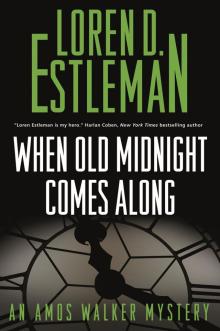 When Old Midnight Comes Along
When Old Midnight Comes Along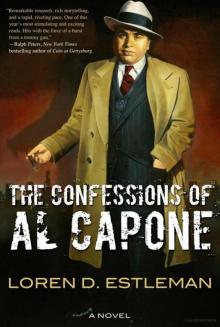 The Confessions of Al Capone
The Confessions of Al Capone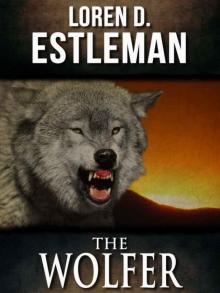 The Wolfer
The Wolfer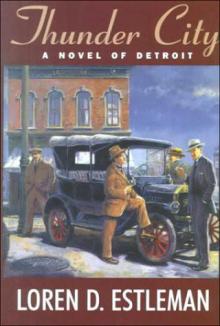 Thunder City
Thunder City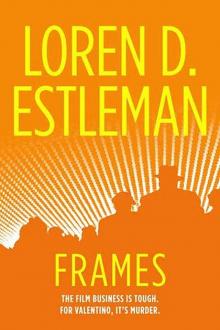 Loren D. Estleman - Valentino 01 - Frames
Loren D. Estleman - Valentino 01 - Frames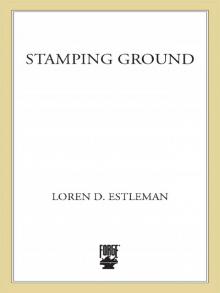 Stamping Ground
Stamping Ground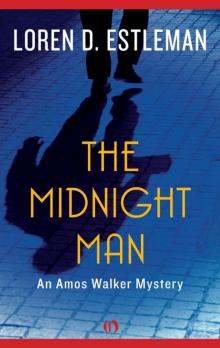 Midnight Man
Midnight Man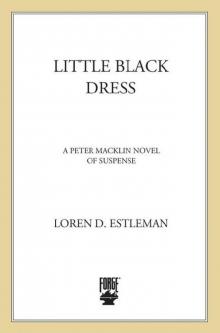 Little Black Dress (Peter Macklin Novels)
Little Black Dress (Peter Macklin Novels)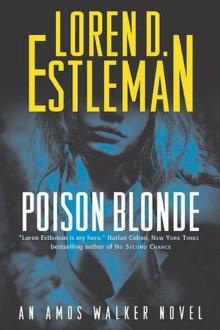 Loren D. Estleman - Amos Walker 16 - Poison Blonde
Loren D. Estleman - Amos Walker 16 - Poison Blonde Brazen
Brazen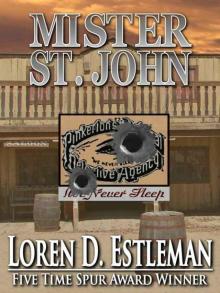 Mr. St. John
Mr. St. John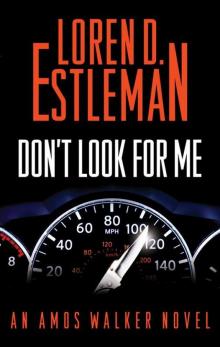 Don't Look for Me: An Amos Walker Novel (Amos Walker Novels)
Don't Look for Me: An Amos Walker Novel (Amos Walker Novels)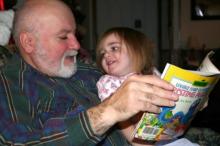 Stress
Stress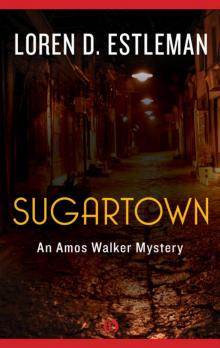 Sugartown
Sugartown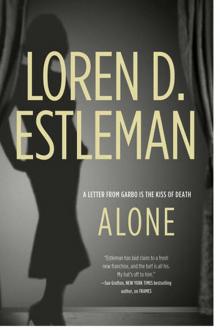 Loren D. Estleman - Valentino 02 - Alone
Loren D. Estleman - Valentino 02 - Alone Sweet Women Lie
Sweet Women Lie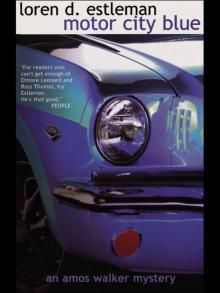 MOTOR CITY BLUE
MOTOR CITY BLUE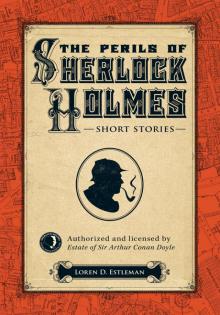 The Perils of Sherlock Holmes
The Perils of Sherlock Holmes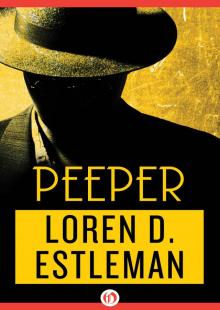 Peeper
Peeper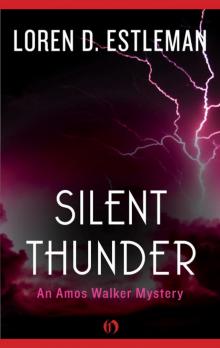 Silent Thunder
Silent Thunder Port Hazard
Port Hazard A Smile on the Face of the Tiger
A Smile on the Face of the Tiger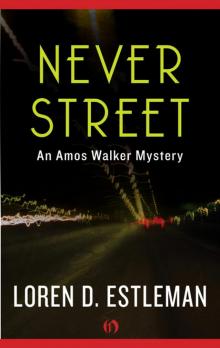 Never Street
Never Street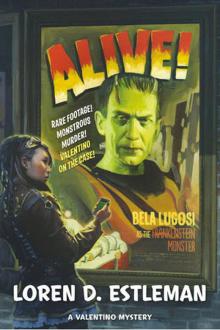 Loren D. Estleman - Valentino 03 - Alive!
Loren D. Estleman - Valentino 03 - Alive!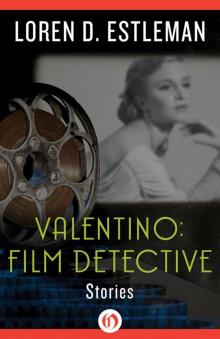 Valentino: Film Detective
Valentino: Film Detective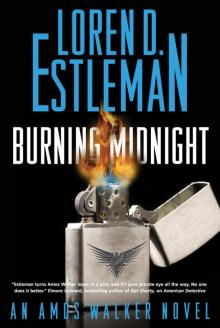 Burning Midnight
Burning Midnight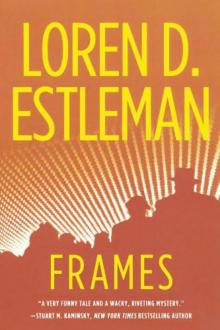 Frames
Frames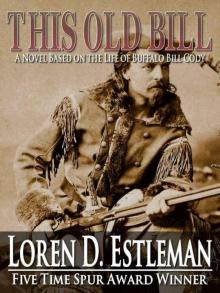 This Old Bill
This Old Bill You Know Who Killed Me
You Know Who Killed Me Ragtime Cowboys
Ragtime Cowboys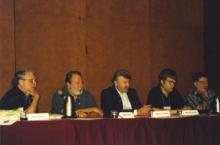 Edsel
Edsel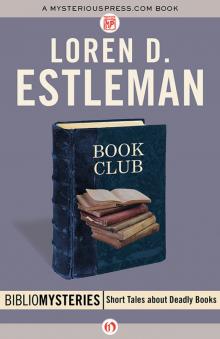 Book Club
Book Club Alive!
Alive!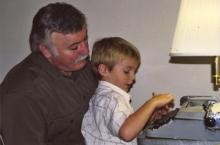 Whiskey River
Whiskey River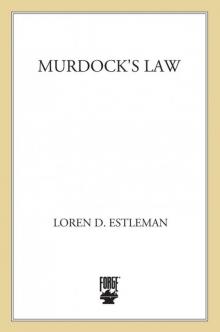 The Murdock's Law
The Murdock's Law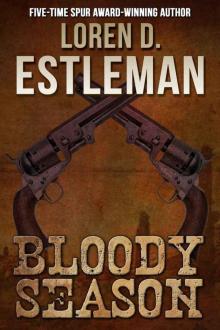 Bloody Season
Bloody Season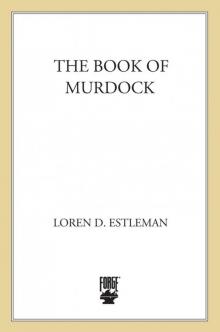 The Book of Murdock
The Book of Murdock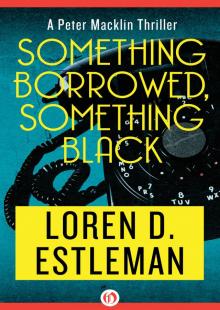 Something Borrowed, Something Black
Something Borrowed, Something Black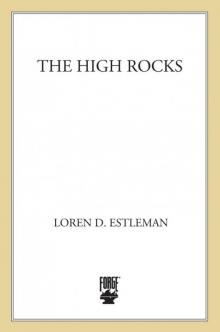 The High Rocks
The High Rocks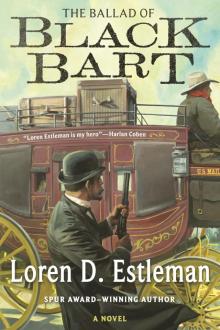 The Ballad of Black Bart
The Ballad of Black Bart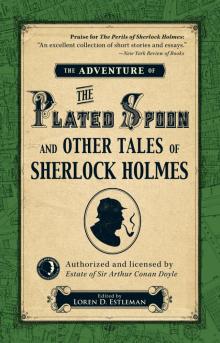 The Adventure of the Plated Spoon and Other Tales of Sherlock Holmes
The Adventure of the Plated Spoon and Other Tales of Sherlock Holmes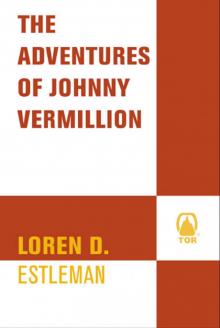 The Adventures of Johnny Vermillion
The Adventures of Johnny Vermillion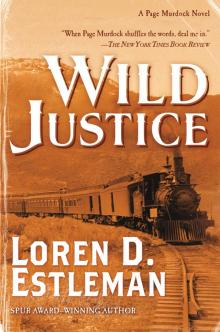 Wild Justice
Wild Justice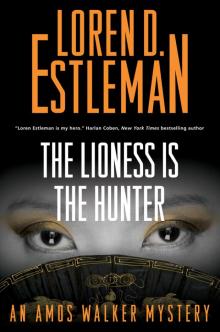 The Lioness Is the Hunter
The Lioness Is the Hunter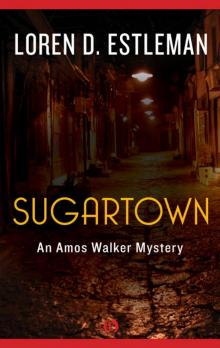 Sugartown: An Amos Walker Mystery (Book Five)
Sugartown: An Amos Walker Mystery (Book Five)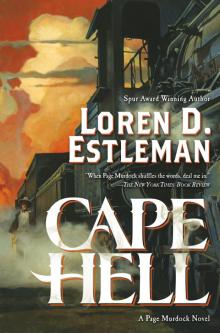 Cape Hell
Cape Hell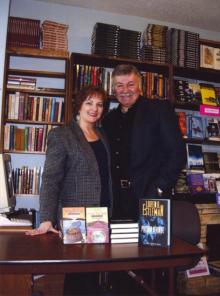 Downriver
Downriver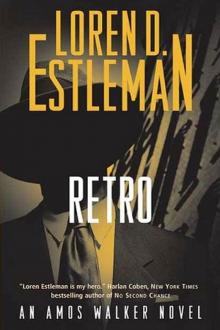 Loren D. Estleman - Amos Walker 17 - Retro
Loren D. Estleman - Amos Walker 17 - Retro Detroit Is Our Beat
Detroit Is Our Beat Jitterbug
Jitterbug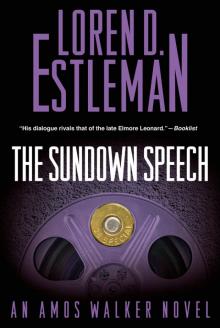 The Sundown Speech
The Sundown Speech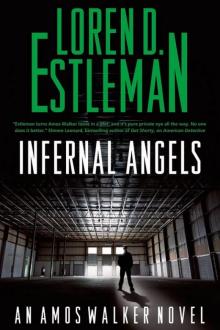 Loren D. Estleman - Amos Walker 21 - Infernal Angels
Loren D. Estleman - Amos Walker 21 - Infernal Angels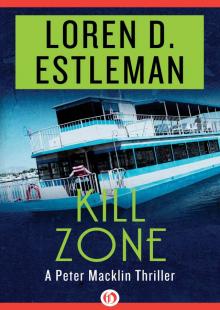 Kill Zone
Kill Zone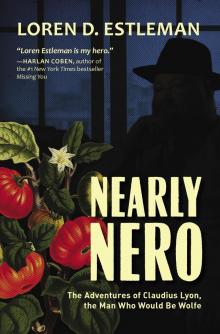 Nearly Nero
Nearly Nero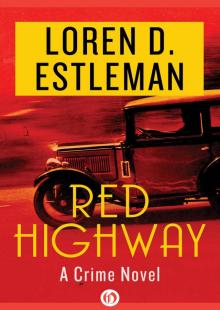 Red Highway
Red Highway American Detective: An Amos Walker Novel
American Detective: An Amos Walker Novel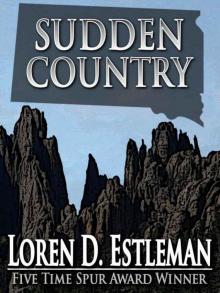 Sudden Country
Sudden Country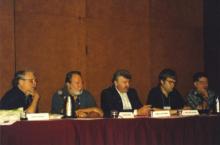 King of the Corner
King of the Corner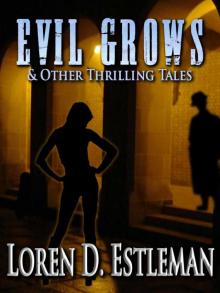 Evil Grows & Other Thrilling Tales
Evil Grows & Other Thrilling Tales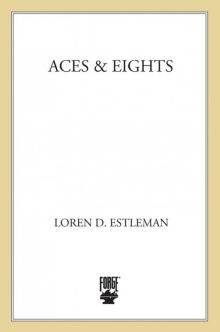 Aces & Eights
Aces & Eights Black and White Ball
Black and White Ball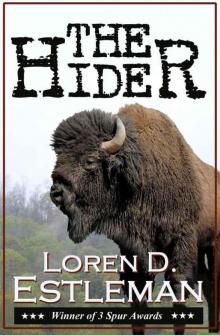 The Hider
The Hider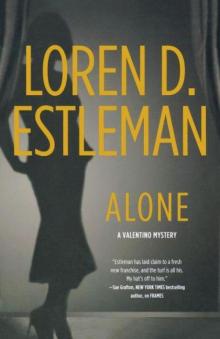 Alone
Alone Amos Walker: The Complete Story Collection
Amos Walker: The Complete Story Collection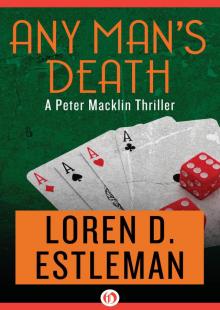 Any Man's Death
Any Man's Death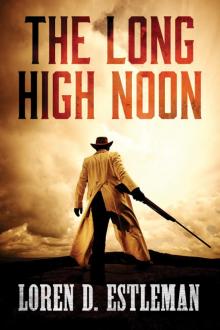 The Long High Noon
The Long High Noon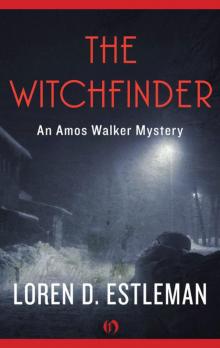 The Witchfinder
The Witchfinder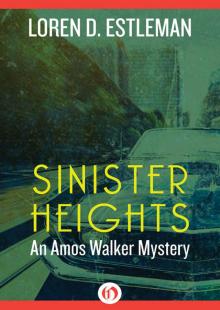 Sinister Heights
Sinister Heights City of Widows
City of Widows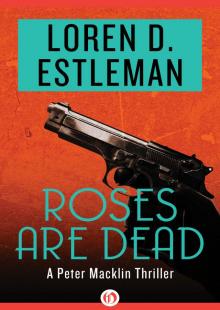 Roses Are Dead
Roses Are Dead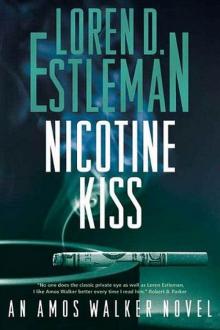 Loren D. Estleman - Amos Walker 18 - Nicotine Kiss
Loren D. Estleman - Amos Walker 18 - Nicotine Kiss